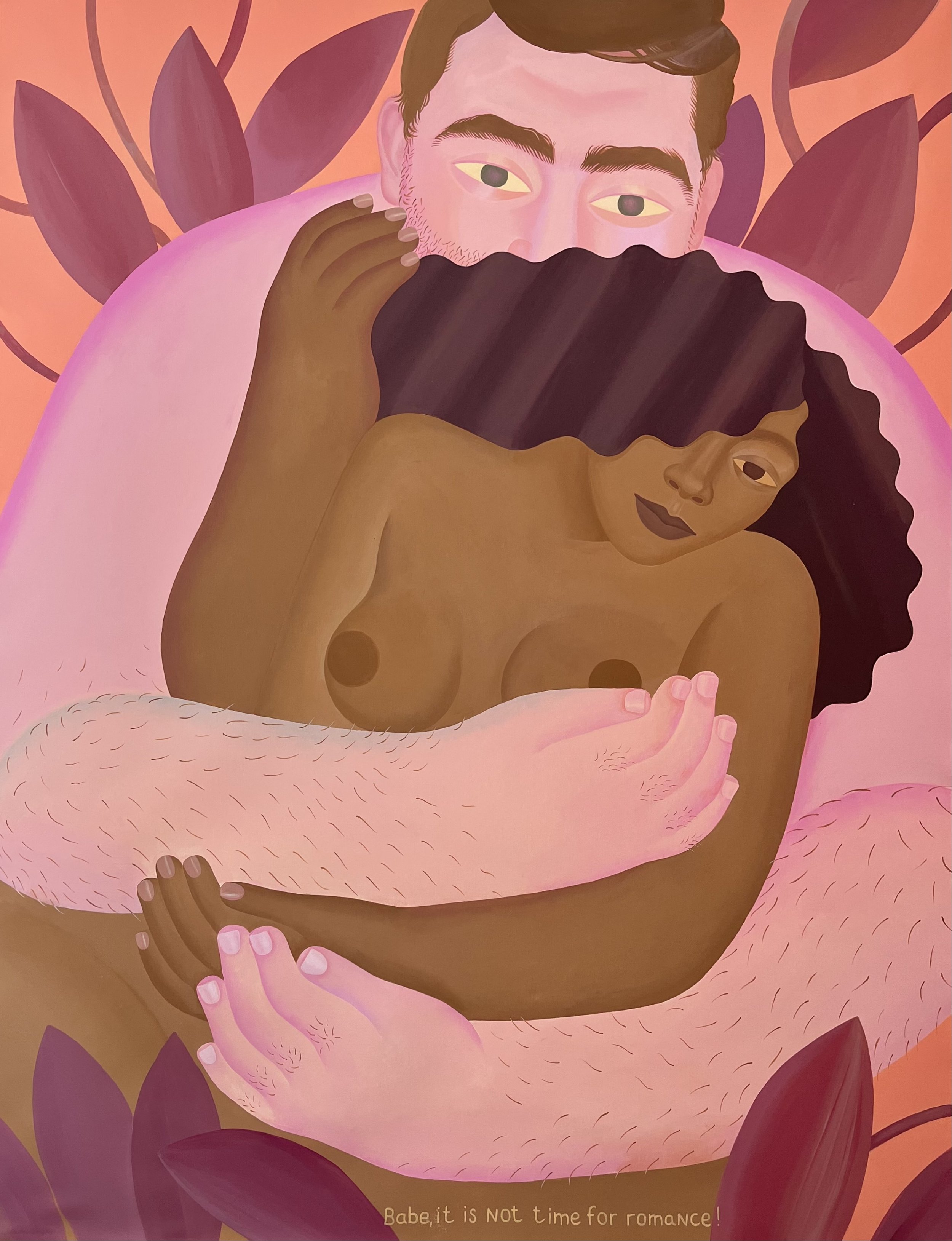Meet the Artist:
Interview with Harita Asumani
As a young, independent visual artist, Harita graduated from the National Academy of Arts, specializing in Scenography—an experience that profoundly shaped her creative perspective, prioritizing the message over the medium. Throughout her creative journey, Harita emphasizes conception, research, and inner dialogue. Her artworks stem from a deep-seated desire to impact her audience, considering her process fulfilled when observing the resulting influence.
Fascinated by human connections and our interactions, Harita aims for her art to facilitate self-discovery and foster a deeper understanding among individuals.
Your exploration of the human role in the universe and society, along with defense mechanisms and traumas, seems deeply personal. How do your inner life and personal experiences influence the themes and narratives within your artworks?
For me good art is always personal and as such it accompanies life events and soul processes. I do use art as a coping mechanism for my fears and insecurities. It is a way to affirm that part of me that I want to triumph.
Most of my works are almost self-portraits. Within these compositions, I depict liberated, sensual women existing in the euphoria of their being, conspiring for the well-being of those who look at them with delight. They are my alter ego with whom we are sometimes in complete union, and sometimes they are the point to which my mediocre self aspires. I try to maintain authenticity at the risk of being vulnerable and sometimes seeming naive. It doesn't always work and I still care what people have to say, but I'm making progress in that direction. When I get it right, all the noise dies down and then the truth becomes one-mine.
Pink appears prominently throughout your works as a leitmotif symbolizing escapism. Could you elaborate on the significance of this color in conveying your artistic message?
I'm drawn to the vibration of this colour and that's why I use it in my work. Regardless of whether I want to put a message, every creative gesture and choice can be interpreted. Color is no exception. I'm aware that, in popular culture, pink is associated with a person's romanticized notions of the world and with escapism. I partially recognise myself into these definitions, so the use of pink can be understood as revelation and conscious vulnerability.
Your artistic language is figurative, often featuring recurring characters and elements in linear compositions. How do these elements aid in expressing the complexities of the soul's journey or the human experience within your art?
Art happens long before a work of art appears and long after a work of art is created. It is impossible for me to express the complexity of the human experience and the journey of the soul with any work. I have never set myself such a goal.
My goal is, through the creative process, to access the hard-to-reach corners of my soul. Depicting repetitive elements and imagery has more of a meditative function for me. In this state of stillness, it is easy to hear my authentic voice. This is how I create space to enrich my human experience.
From the viewer's point of view, the function of these elements can be reduced to a decorative one, if that is their need, and that will suffice.
Your works offer solutions without aiming for universal answers. Could you describe a specific artwork where you've presented a solution or resolution within the context of the themes you explore?
"It's not time for romance" is my most significant series of paintings to date. The series is dedicated to the courage to allow ourselves vulnerability by choosing the language of love and thus manifesting our repressed romantic selves. The time in which this series was created encompasses dark global events (war in Ukraine) and personal experiences bringing me a sense of completeness and fulfilment. It is in the conflict of these parallel occurrences that the underlying message of my work crystallises - romance and war coexist.
Many of your works delve into the treatment of traumas. How do you strike a balance between expressing the depth of these traumas artistically while also ensuring your art remains accessible and relatable to audiences?
My works show one possibility in which the potential is developed and has overcome its traumas. Eroticism cannot be vulgarity, freedom has its responsibility and authenticity is the only form of existence. I believe that each of us, consciously or not, wants to experience ourselves in this way. This is why I think that what I do is accessible and inspiring to audiences.
What exciting endeavors lie ahead for you? What can our community anticipate from your future ventures, and how can they support?
In my forthcoming artistic endeavors, the thematic focus on eroticism, freedom, and truth will persist. Concurrently, meticulous preparations are underway for group and solo exhibitions scheduled in Turin, Milan, Sofia, and Timisoara in the year 2024.
The significance of dialogue is paramount to my artistic development. I express gratitude when audiences actively engage, sharing their thoughts and feelings regarding my artistic practice. Meaningful discussions, wherein we provoke and challenge one another, not only enrich the artistic experience but also transform the viewer into a co-author. The diverse perspectives stemming from their personal life experiences inevitably contribute to this collaborative process.
Artist Contact Info:
Website: https://haritaasumani.com/
Instagram: https://www.instagram.com/h_asumani/
All images are property of Harita Asumani






